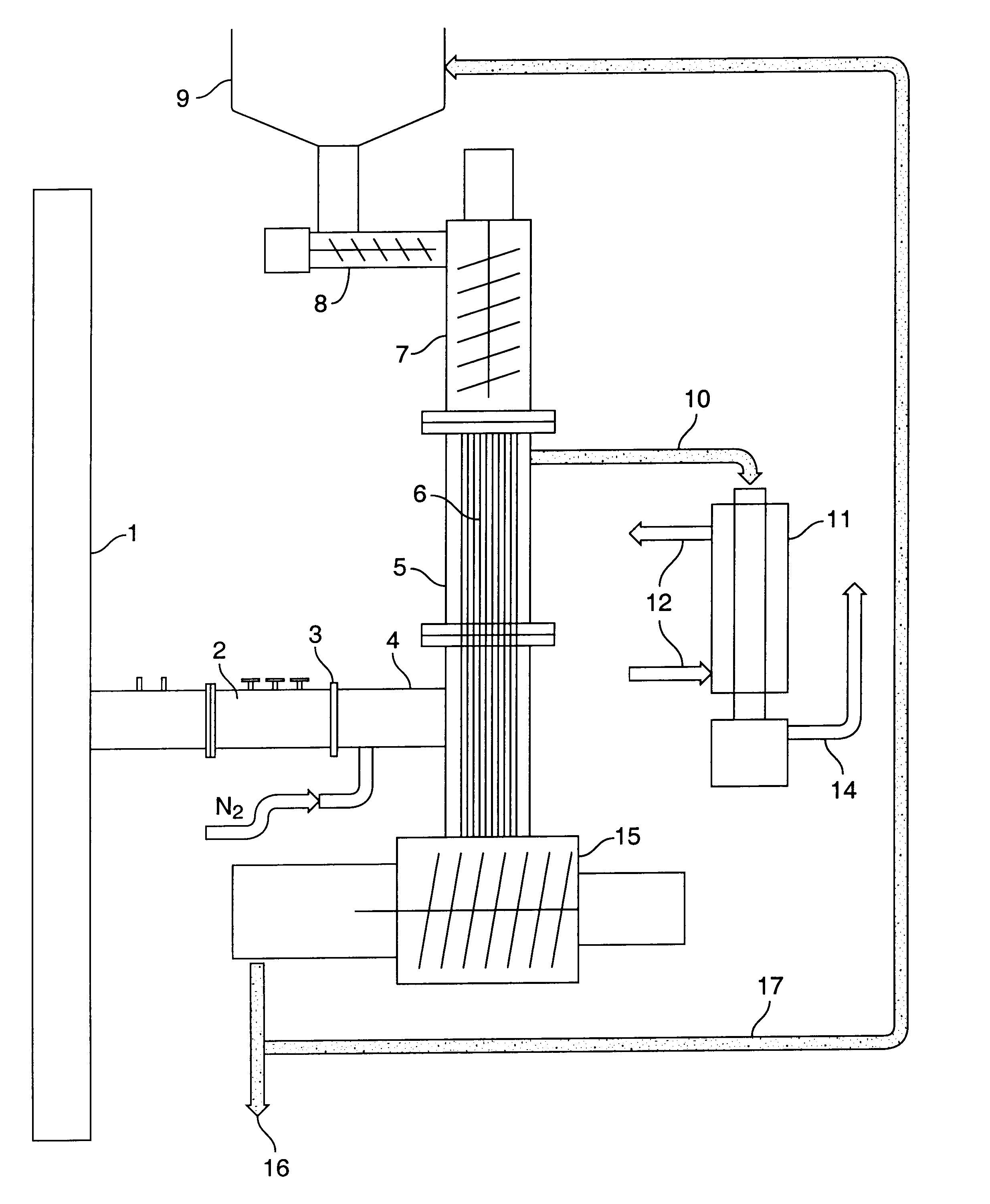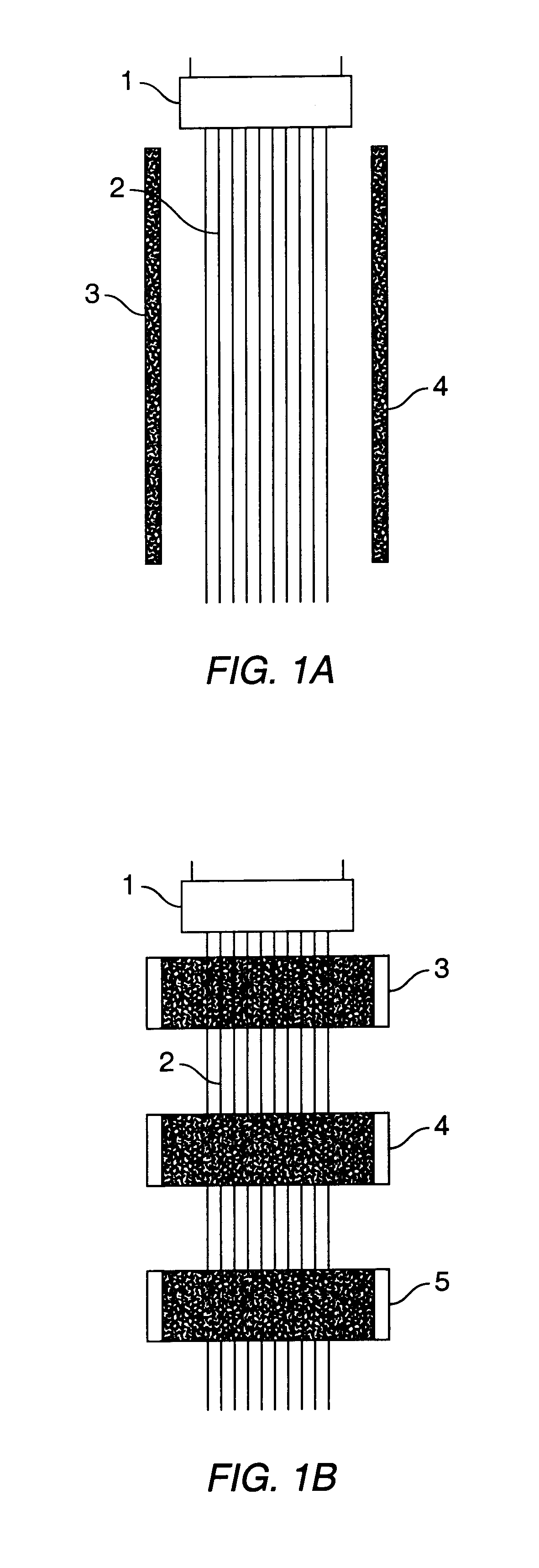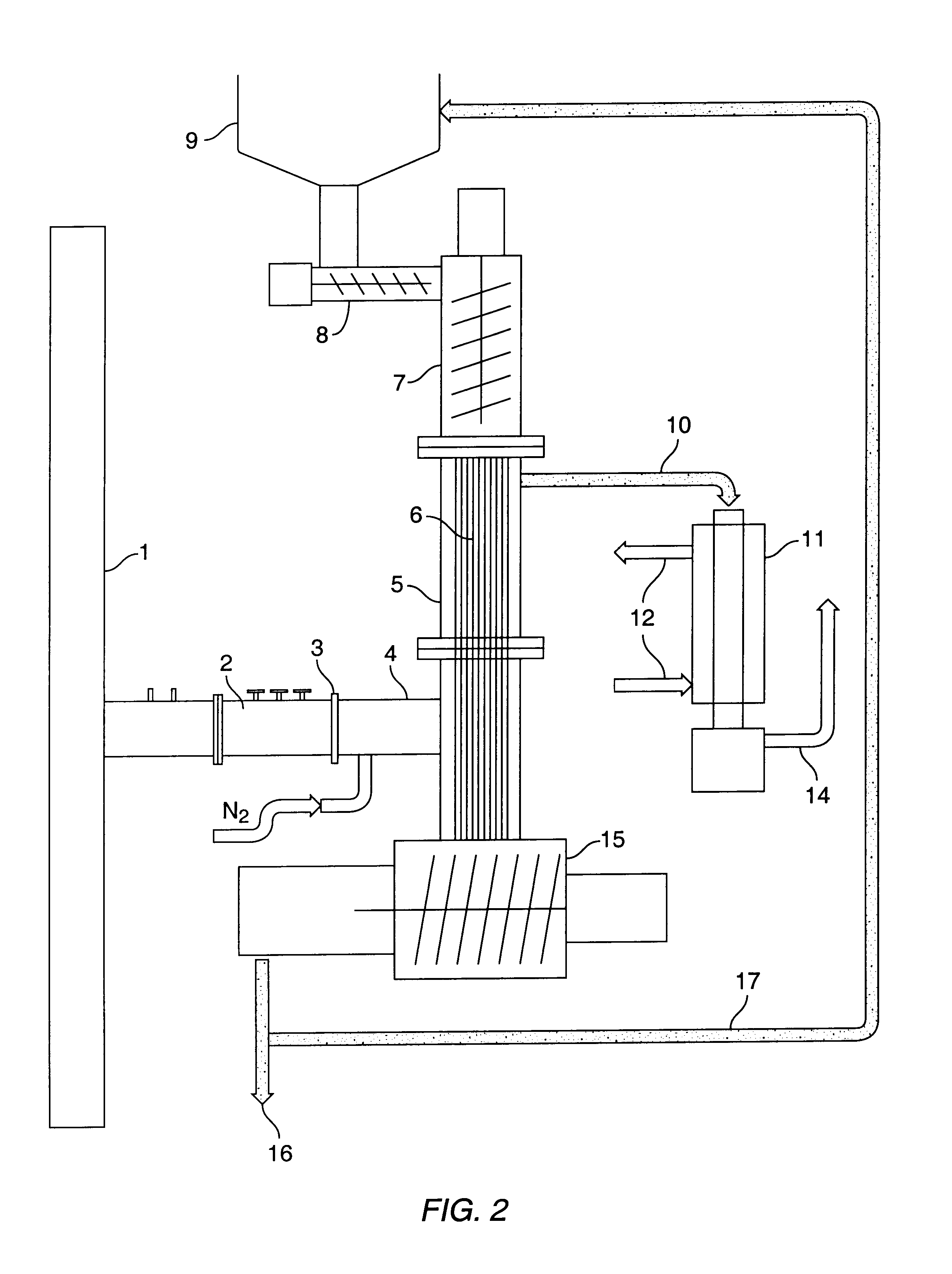Process and reactor for microwave cracking of plastic materials
a technology of plastic materials and reactors, which is applied in the field of plastic material processing and reactors for microwave cracking, can solve the problems of no known prior, no known prior, and bulk metals with a high electrical conductivity are not good sensitizers and absorbers of microwave energy
- Summary
- Abstract
- Description
- Claims
- Application Information
AI Technical Summary
Problems solved by technology
Method used
Image
Examples
example ii
The reactor set-up was the same as in Example I. The plastics mixture consisted of low density polyethylene (25 wt %), high density polyethylene (15 wt %), polypropylene (12 wt %), polystyrene (10 wt %), polyethylene terephthalate (8 wt %), a carbon-based sensitizer (20 wt %), and catalyst (10 wt %). The sensitizer was as described in Example 1. The catalyst was a ZSM-type crystalline zeolite having the composition of 0.4 Na.sub.2 O:Al.sub.2 O.sub.3 :8 SiO.sub.2. The temperature in the extruder was 290 to 300.degree..
Under the 30 kW microwave irradiation, the plastics in the feed material was cracked giving rise to the following products:
example iii
The reactor set-up was the same as in Examples I and II. The plastics mixture consisted of low density polyethylene (25 wt %), high density polyethylene (15 wt %), polypropylene (12 wt %), polystyrene (10 wt %), polyethylene terephthalate (8 wt %), a carbon-based sensitizer (20 wt %), and catalyst (10 wt %). The sensitizer and catalyst were the same as in Example II. The temperature in the extruder was maintained from 290 to 300.degree. C.
Supporting alumina rods were used having a 10 mm gap in the middle of the reactor, which facilitated the development of microdischarges during irradiation. Under 30 kW microwave irradiation, the plastics in the feed material were cracked giving rise to the products presented as follows:
example iv
The reactor set-up was the same as in Example III. The plastics mixture consisted of low density polyethylene (25 wt %), high density polyethylene (15 wt %), polypropylene (12 wt %), polystyrene (10 wt %), polyethylene terephthalate (8 wt %), a carbon-based sensitizer (20 wt %), and catalyst (10 wt %). The sensitizer and catalyst were the same as in Example 2. The temperature in the extruder was maintained from 290 to 300.degree. C.
The reactor was flushed with a flow of nitrogen containing 2% of oxygen. During microwave irradiation, the temperature of the plastic material mixed with catalyst and sensitizer was increased up to 600 to 700.degree. C. The microdischarges generated at the surface of the plastic streams initiated free radical reactions of the polymer molecules and created products resulting from their decomposition. Participation in these reactions of oxygen which is added into the reactor, increased the temperature of the processed material and yield of the products. The...
PUM
| Property | Measurement | Unit |
|---|---|---|
| wt % | aaaaa | aaaaa |
| temperature | aaaaa | aaaaa |
| temperature | aaaaa | aaaaa |
Abstract
Description
Claims
Application Information
 Login to View More
Login to View More - R&D
- Intellectual Property
- Life Sciences
- Materials
- Tech Scout
- Unparalleled Data Quality
- Higher Quality Content
- 60% Fewer Hallucinations
Browse by: Latest US Patents, China's latest patents, Technical Efficacy Thesaurus, Application Domain, Technology Topic, Popular Technical Reports.
© 2025 PatSnap. All rights reserved.Legal|Privacy policy|Modern Slavery Act Transparency Statement|Sitemap|About US| Contact US: help@patsnap.com



